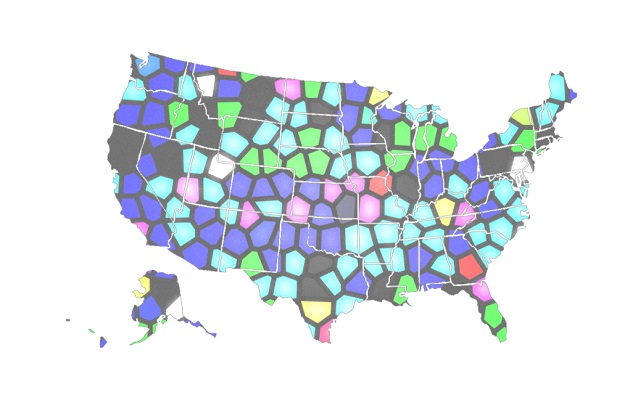 The study finds there are bright spots within under-served demographic groups when it comes to income inequality, retirement insecurity and household debt. However, some groups have suffered disproportionately in the wake of the Great Recession. (Photo: Shutterstock)
The study finds there are bright spots within under-served demographic groups when it comes to income inequality, retirement insecurity and household debt. However, some groups have suffered disproportionately in the wake of the Great Recession. (Photo: Shutterstock)
When it comes to finances, socioeconomic factors take a toll on particular groups within the U.S. population .
According to Prudential Financial's financial wellness census “The Cut – Exploring Financial Wellness Within Diverse Populations,” there are bright spots within under-served demographic groups when it comes to income inequality, retirement insecurity and household debt.
However, some groups have suffered disproportionately in the wake of the Great Recession.
Unique challenges
The study looks at the unique challenges facing Asian Americans, blacks, Latinos, caregivers, women and the LGBTQ community. It finds, among many things, the following:
- Black Americans, Asian Americans and Latino Americans are far more likely than the general population to be providing financial support to extended family members.
- More than half of women are the primary breadwinners in their households, as well as taking on more nonfinancial responsibilities than men.
- Caregivers (many of whom are women) are also not just providing care, but “still working outside the home at levels that almost match those who are not caregivers.”
- Both men and women in the LGBTQ community tend to earn less than the general population.
Asian Americans
Within the Asian community, foreign-born Asians are more likely than the general population to be taking advantage of a workplace retirement plan, while U.S.-born Asians are less likely.
The former are more likely to be employed full-time, while the latter are more often small business owners or independent workers. And foreign-born Asians are more likely to expect their retirement plans to yield income in retirement.
Black Americans
Black Americans have lower levels of emergency and retirement savings, with 57 percent of black households surveyed having no retirement savings, compared with 44 percent of the general population.
Among those that do have retirement savings, the average total is $23,000 for black households, compared with $154,000 for general population households.
The report finds that only about 45 percent of higher-income black households, and just 20 percent of lower-income black households, have accounts in an employer-sponsored defined contribution savings plan.
Caregivers
Caregivers are primarily still working, with fewer than a quarter being retired. And 38 percent say it's likely to stay that way, since they won't be able to retire, compared with 25 percent of the general population.
It's not that they don't have savings or retirement accounts, but that they've put the money to other uses; they're more likely to have outstanding loans, from 401(k)s to banks, family members, payday loans, home equity loans and other sources.
Caregivers with special needs children are more likely to have taken a loan or hardship withdrawal from a DC plan.
Latinos
Latinos are more focused on helping family members financially.
Members of the general population are nearly twice as likely as foreign-born Latinos (40 percent, compared with 21 percent) to participate in an employer-sponsored retirement savings plan such as a 401(k), and a little more likely than U.S.-born Latinos (32 percent).
But it could have more to do with lack of money than lack of access; nearly identical percentages of Latino Americans and the general population (22 percent and 20 percent, respectively) chalked up lack of retirement plan participation to having too many current expenses.
And 41 percent of both groups said their employer provided a retirement plan that matched employee contributions. While 10 percent of the general population said they “hadn't gotten around” to participating, not that many more Latinos—16 percent—said the same.
LGBTQ Americans
LGBTQ respondents own fewer financial products, including retirement accounts, and they're saving less than the general population.
Just 27 percent of LGBTQ respondents have an employer-sponsored retirement savings account such as a 401(k), compared with 41 percent of non-LGBTQ respondents.
And only 21 percent have an individual retirement account, versus 32 percent of non-LGBTQ respondents.
In addition, a surprising 62 percent of LGBTQ respondents said they are not currently saving for retirement in any way, compared with just 49 percent of non-LGBTQ respondents.
As a result, 55 percent of LGBTQ respondents had saved nothing for retirement, compared with 42 percent of non-LGBTQ respondents—although when they do save, they manage to put away nearly as much as the general population, at $126,000, on average, versus $158,000.
Women
Women make less, and save less for retirement for a myriad of reasons.
The study reveals that just 54 percent of women respondents have saved for retirement, at an average of $115,412. That compares with 61 percent of men who have saved for retirement, at an average of $202,859.
© Touchpoint Markets, All Rights Reserved. Request academic re-use from www.copyright.com. All other uses, submit a request to [email protected]. For more inforrmation visit Asset & Logo Licensing.






